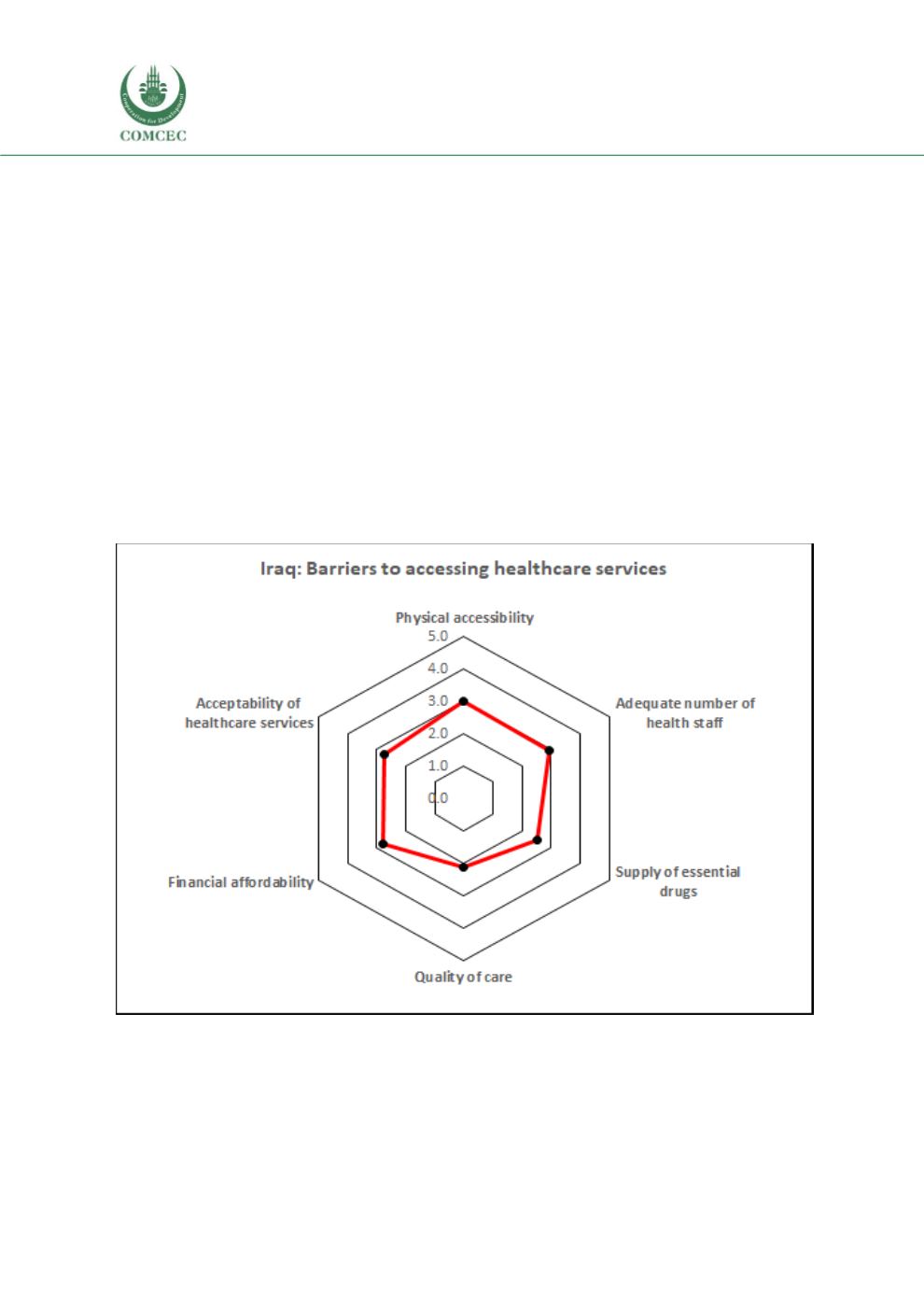

Child and Maternal Mortality
in Islamic Countries
118
of the information collected is inaccurate and this information not used for the most part to plan
and formulate health policies."
Another respondent noted that "Workforce; No doctors are available in about 50 % of PHCs and
only 6.2 % of physicians are working in PHC centers. There is poor coordination between MOH and
Ministry of higher education / Academia so colleges of medicine in their plans do not satisfy the
MOH requirements of specialized doctors in terms of required numbers to be graduated every
year."
Perceived barriers to accessing healthcare services
The quality of care (Average score of 2.1) was perceived as the most pronounced barriers to
accessing health care in Iraq (Figure 3.66). The other barriers included physical accessibility
(3.0), number of health staff (2.9), the supply of essential drugs (2.5), financial affordability (2.8)
and acceptability of health care services (2.7), these were considered as moderate barriers.
Figure 3.66. Barriers to accessing healthcare services, Iraq
(1= Most significant barrier; 2= Second most significant barrier; 3= Moderate barrier; 4=
Somewhat of a barrier; 5= Not a barrier)
“The amounts allocated for medicines and medical supplies are insufficient to cover the total need
even of the essential medicines. Lack of funding has led to significant gaps in the provision of
curative, preventive and infrastructure services from hospitals and primary health care centers”.
“There is a lack of adequate health promotion and health education, with low allocated budget for
such services”
.
















